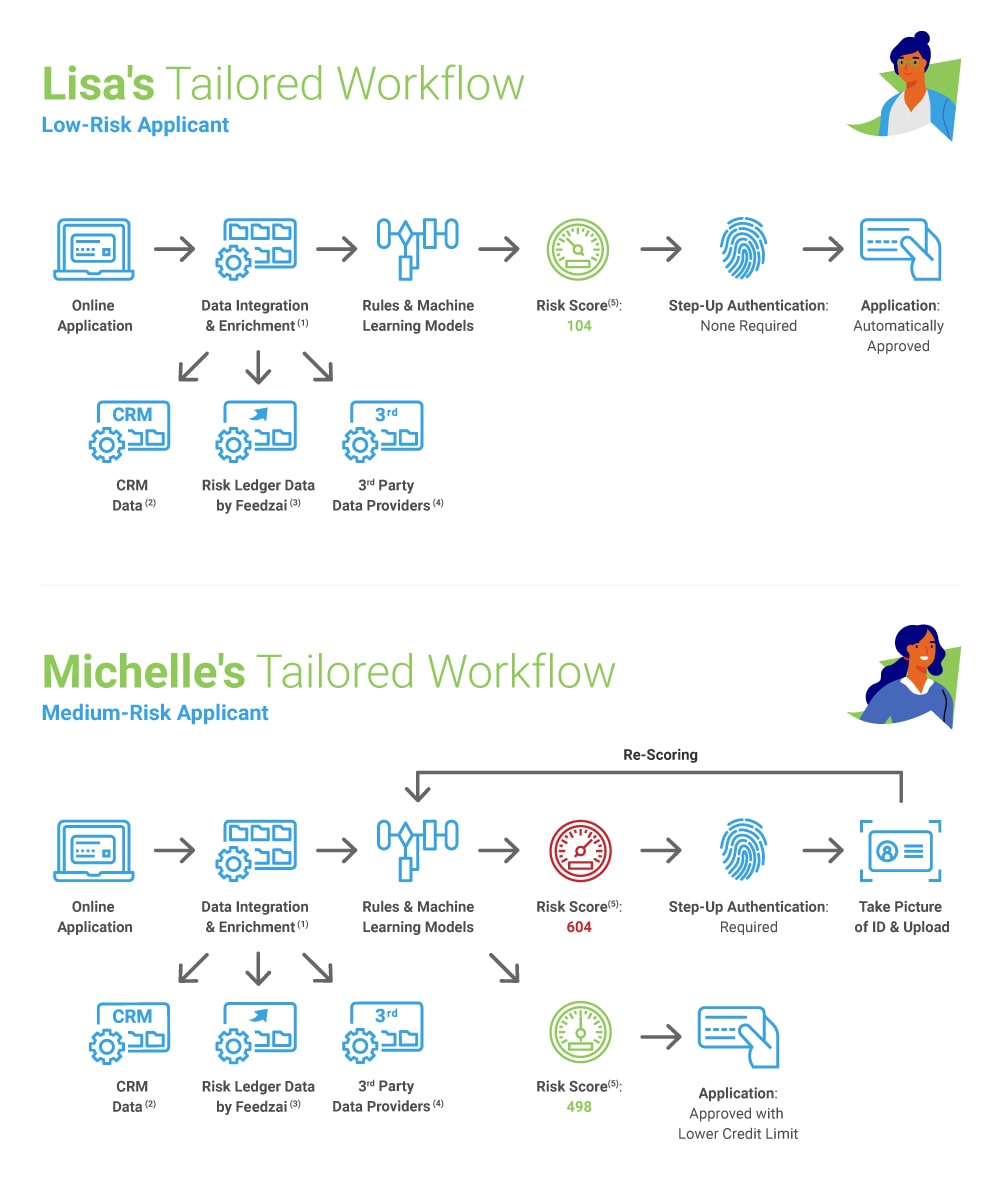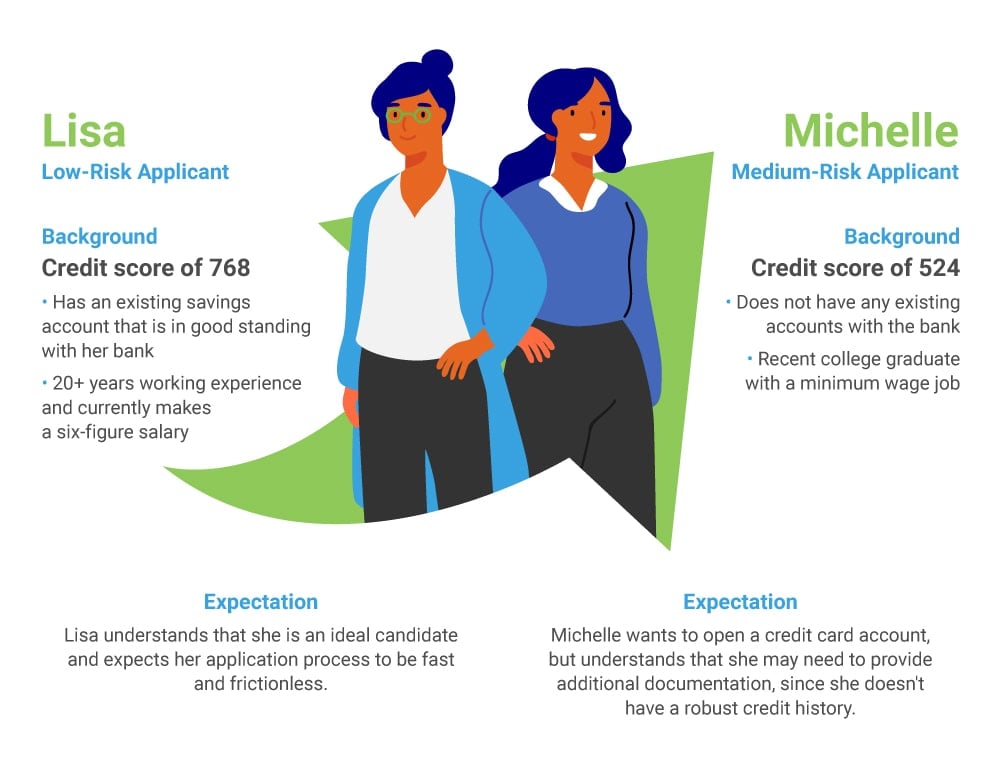
This is the first installment of a blog series that explores friction — friction that affects both customers and the banks themselves — across the account opening process.
Remember taxi cabs? The ubiquitous yellow cars dominated the streets in cities across the world. Cab drivers navigated without Google maps and knew every shortcut imaginable. But before taxi cab companies had a chance to respond, they were replaced by Uber and Lyft. The reason for their downfall? It all boils down to rideshare companies’ successes in reducing friction. While these companies may contract inexperienced drivers who struggle to navigate the simplest routes, they offer riders user-friendly apps that provide estimated times of arrival, payment information upfront, and offer a level of comfort. (Being able to easily confirm that you’re actually getting on the rideshare you booked before getting on? Definitely reassuring.) But it isn’t just the cab industry that’s been disrupted by digital transformation — banking has as well.
Consumers now expect seamless online experiences for every transaction, and financial institutions intent on surviving disruption and growing know they also must adapt to the digital world, particularly when it comes to online account opening processes. Customers are moving from digital-optional to digital-preferred to digital-only. Most consumer banking interactions in the U.S. are now digital (mobile or online), and the European Banking Authority notes the same trend with more than 50 percent of adult EU citizens using Internet banking.
If financial institutions want to make good first impressions and stay competitive, they must cater to consumers’ preferences and rising expectations for frictionless account opening experiences — all the while keeping the consequences of the increasing risk of fraud at bay. Banks must now extend an intelligent account opening solution that meets the needs of applicants with different backgrounds, reducing application abandonment rates and increasing the pool of applicants they can acquire from.
In this post, we explore how banks can reduce friction while assessing risk efficiently, increasing customer acquisition, and combating fraud. Follow the credit card account opening processes of two applicants and learn what capabilities are helpful for both applicants and banks, which aren’t, and how you can save your bank from becoming the next yellow cab.
How to win more customers
As more and more consumers expect experiences with minimal or no friction, banks’ outdated account opening processes cause reductions in customer acquisition. This takes a toll on banks’ revenues. But one way to prevent all this from happening? Tailored workflows that reduce friction for customers in the account opening process.
Customizing the user journey cuts friction
Applicants aren’t all the same, and a bank’s risk exposures differ from product to product. For example, what’s at stake varies depending on whether you offer someone a credit card or a debit card. It simply doesn’t make sense for everyone to go through the exact same account opening process each and every time, which is what often happens when applicants go through traditional account opening processes (i.e., processes without tailored workflows).
Low-risk applicants know they’re ideal customers. They demand quick and frictionless account opening experiences. On the other hand, medium-risk applicants, such as some college students, typically expect additional requests for information when they apply for a credit card since they know they lack well-established credit histories.
Tailored workflows customize the account opening process based on risk assessment, risk thresholds, and other criteria, so applicants go through different steps and — only when necessary — step-up authentication (a process that asks users to produce additional forms of authentication, such as ID verification, to confirm their identity). This reduces friction in the account opening process and helps support banks’ growth goals.
How tailored workflows reduce customer friction
To demonstrate how tailored workflows reduce account opening friction, we’ll detail the journeys of two applicants with contrasting backgrounds.
Meet our two hypothetical applicants, Lisa and Michelle.
Lisa is the owner of a cozy two-story home in a hip Silicon Valley neighborhood. She’s enjoyed a stable, flourishing career as an aerospace engineer for the past 21 years. With excellent credit scores hovering around the 760s, Lisa is a low-risk applicant.
Michelle, on the other hand, is in a different life phase. Michelle is fairly new to the world of credit, and she’s just nabbed her bachelor’s degree and landed her first job: a media coordinator position in LA that pays her minimum wage. As a thin-file applicant with credit scores around the 520s, Michelle is a medium-risk applicant.
The journeys of two credit card account opening applicants
Lisa and Michelle each fill out the same account opening application, but their backgrounds are quite different. How do their journeys unfold?

(1) Data Integration & Enrichment: Application is enriched with additional data to obtain information about the applicant to verify their identity.
(2) CRM Data: Integrate with banks’ existing CRM data to better understand an applicant’s future behavior based on any existing accounts the applicant has with the bank.
(3) Risk Ledger Data by Feedzai: Utilize Feedzai’s cross-industry consortium data to gain a more thorough view of the customer.
(4) 3rd Party Data Providers: External calls are made to 3rd Party Data Providers to verify the applicant’s identity. (These can be credit score checks, documentation checks, email or address checks, etc.)
(5) Risk Score: Potential risk scores are calculated on a scale of 0 (low risk) to 1000 (high risk).
Key learnings in applying tailored workflows for account opening
Lisa and Michelle came into the account opening process with different backgrounds. Yet, they were both approved to open a credit card account. But their journeys and end results could have taken drastically different turns without tailored workflows.
Many banks’ application processes take a one-size-fits-all approach, so step-up authentication is prompted regardless of the applicant. However, as a low-risk applicant who’s a good client to onboard, Lisa has higher expectations for a frictionless experience, since she knows banks need less data to complete her onboarding process. For this reason, if Lisa had gone through a one-size-fits-all application process and step-up authentication was triggered, this may have deterred her from completing the application because of unnecessary friction. The bank may have lost a desirable customer as a result.
Michelle’s experience could have done a 180 as well. As mentioned before, because she knows she’s currently not the strongest candidate, Michelle tends to accept requests for additional information and steps. Since tailored workflows create a seamless process, however, Michelle likely didn’t even realize that she had to undergo extra steps during her account opening process. The result is a win-win: Michelle is able to open an account (with a lower credit limit, which can be updated over time after there’s a better understanding of her behavior) while experiencing as little friction as possible, and the bank is able to acquire Michelle as a customer while carrying out the necessary due diligence and mitigating risk.
Tailored workflows bring various benefits for banks and their applicants. In this day and age, reducing friction for consumers and decreasing onboarding losses is key. Through customized user journeys, it’s possible to push the barriers and increase acquisition of valuable customers rather than turning them away.
In our second post, we’ll illustrate the journey of our low-risk applicant, Lisa, as she navigates two different account opening processes — one that has tailored workflows, and a traditional account opening process without tailored workflows.
Interested in Feedzai’s account opening solution? Schedule a demo.
Share this article:
Jaime Ferreira
Jaime Ferreira is the Vice President of Risk & AI at Feedzai. His team collaborates closely with customers across various sectors to deliver robust fraud and anti-money laundering detection. Jaime's ambition is to create a safer world with less fraud, scams and money laundering.
Related Posts
0 Comments6 Minutes
A Guide to Secure, Seamless User Authentication in Payments
Online payments demand a delicate balance between security and user experience. Consumers…
0 Comments7 Minutes
Combating Emerging Scams in the Philippines
The Philippines is witnessing remarkable growth in digital banking. Unfortunately, a…
0 Comments5 Minutes
Feedzai is a Leader in the 2024 IDC MarketScape for Enterprise Fraud Solutions
Exciting news! Feedzai, the world’s first RiskOps platform, is proud to have been named a…


